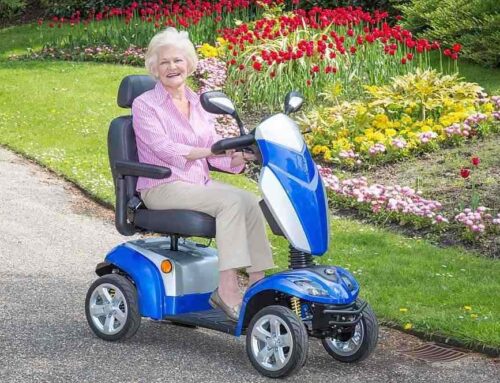Although there are many different types of wheelchairs available nowadays, the most popular of them all is still the classic manual wheelchair. But how can you know which manual wheelchair is the right one for you? It can be complicated to choose the best wheelchair for your needs when there are so many excellent options available today. Therefore, selecting the right chair requires some research, which we’ve done for you. Join us as we look at everything you need to know in order to make your manual wheelchair shopping a success.
Identify Your Needs
For a person in need of a wheelchair, a seating assessment from a skilled physiotherapist is needed. A professional evaluation will help you get the correct chair and seating. Some of the factors to be considered include:
1. The Degree of Dependence
The degree of dependence greatly influences the selection of a manual wheelchair. Are you comfortable with propelling yourself? If yes, a self-propelled manual wheelchair is the right choice for you. It has large back wheels and is intended for people with a high degree of independence. Self-propelled chairs require you to utilize upper body strength to move the wheelchair, usually by through turning the push rims on the rear wheels with your hands.
If you aren’t physically capable of self-propelling your wheelchair, then an attendant propelled manual wheelchair suits you best. An attendant manual wheelchair (also referred to as a transit manual wheelchair) is narrower than a self-propelled one, and has smaller back wheels with pushing handles at the rear. As there are no hard rules regarding which type of chair to choose, it is up to the user to decide what works best for them, by taking his or her physical abilities into account.
2. Your Posture and Balance
Your posture is the position in which you hold your body. While sitting in a manual wheelchair, you will need to be able to maintain a comfortable position. Proper balance will help you remain steady when seated.
3. Body Height and Weight
There is no standard user height for a manual wheelchair. You will, therefore, need to measure and your height and weight. Logically, a tall person will need a chair that can support longer legs.
4. Your Mobility
Mobility includes walking, sitting, standing and the ability to move body parts (such as hands, the face, or feet) while in the chair. Are you able to walk short distances? Can you comfortably get in and out of the wheelchair? Will you need a transfer board? Are you usually hoisted up?
All these factors can vary depending on age, tiredness, physical prowess or a medical condition. Therefore, we recommend consultation with a professional before choosing a manual wheelchairs.
Features of a Manual Wheelchair
Now that you have a better understanding of your preferences, let’s have a look at various manual wheelchair parts.
5. Armrests
Most manual wheelchairs accommodate a wide variety of armrest designs. They can either be full length or desk style. Some come as either detachable, foldable or swing away. For a user with excellent stability, he or she may prefer less supports and opt for the desk style (shorter armrests) giving the upper body more freedom of movement. To avoid aggravating your arms, choose a wheelchair with padded armrests.
6. Brakes
Usually, the brakes are mounted near the tires, but on an attendant-propelled wheelchair, the brakes are fitted near the pushing handles to give the attendant better control.
7. Leg Rest & Footplates
Elevating footrests are used in case the person wants to pick their feet up while sitting. Swing away footplates are a favorite among users, mainly because they allow you to stand at the chair’s front without necessarily having to step over the footplates.
8. Material
Manual wheelchairs are generally made from steel, aluminum, titanium and carbon fiber. Steel is considered heavy and resilient while aluminum is light and easy to transport. Titanium and carbon are the most lightweight metals among these four.
These wheelchair features need to be measured to ensure a perfect fit. Some of the measurements to be taken include seat width, backrest height, and the armrest height. Before purchasing, it is also wise to check that the chair is compliant with your country’s healthcare regulations.
Other Things to Note
9. Training and Safety
Most people are able to figure out how to use a manual wheelchair on their own, but some individuals may find it difficult. Luckily, some companies and organizations can provide you with basic training on how to use your new wheelchair.
10. Servicing and Maintenance of Your Manual Wheelchair
Think of your manual wheelchair as your little car. To keep it functioning, you will need to service it every so often. Fortunately, for those who acquired their chair from the national healthcare system, it is typically maintained and repaired through the wheelchair service.
Bottom Line
Buying the right manual wheelchair is the difference between success and regret. Don’t trade the comfort of a chair for practically; choose both, and only both.






